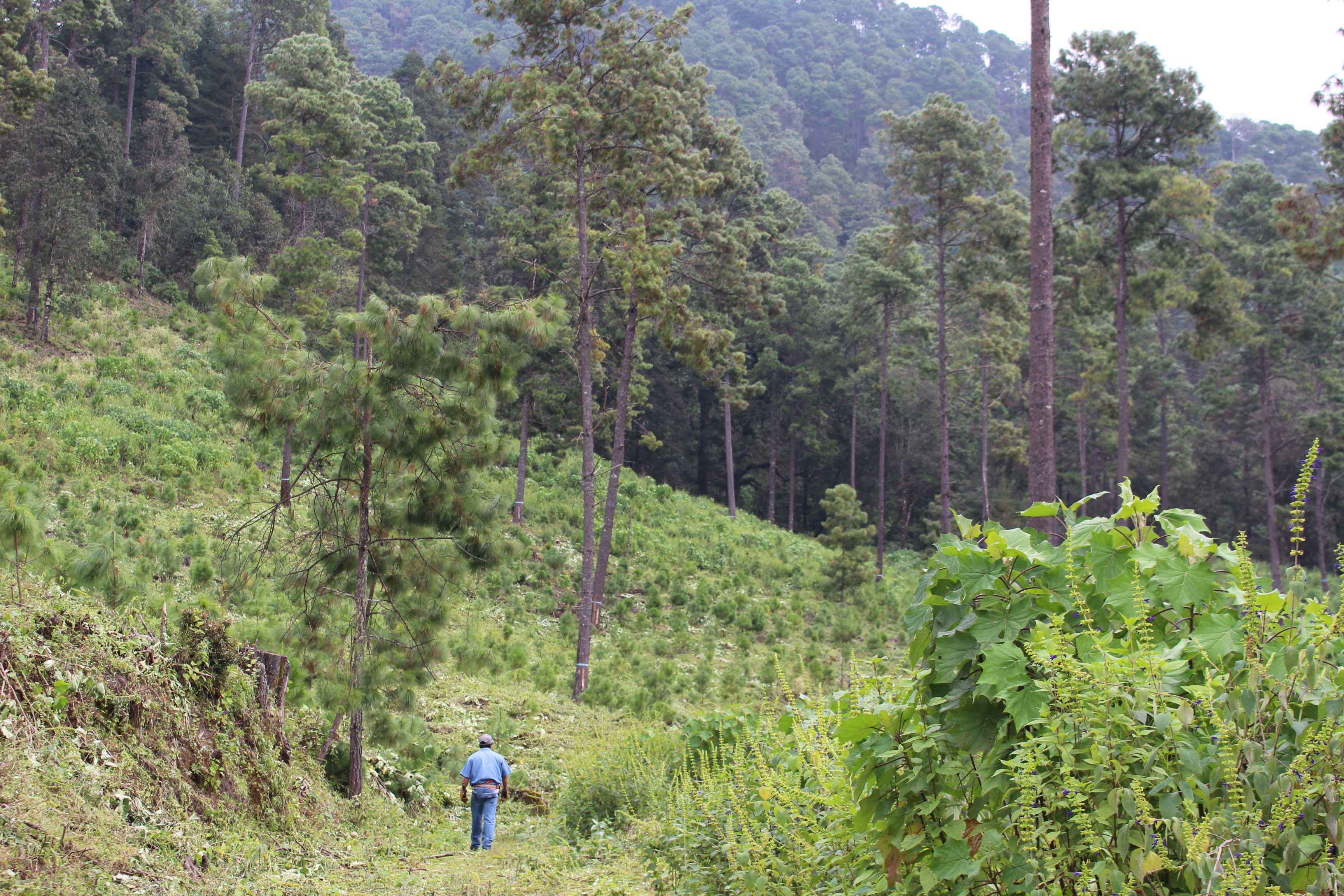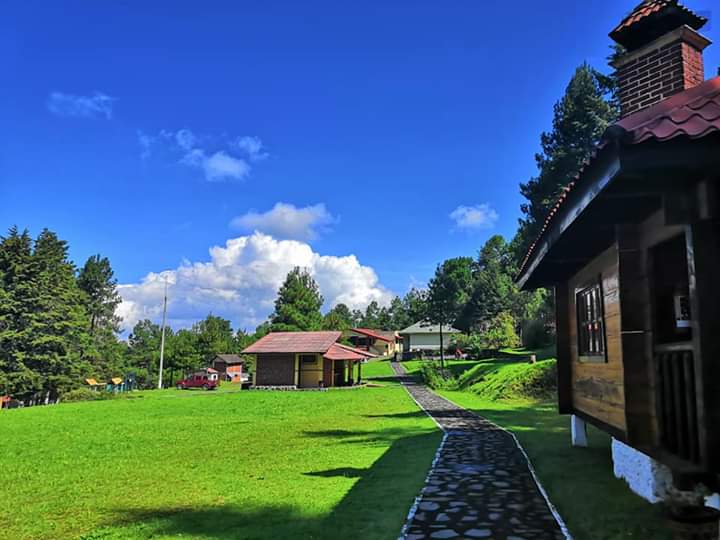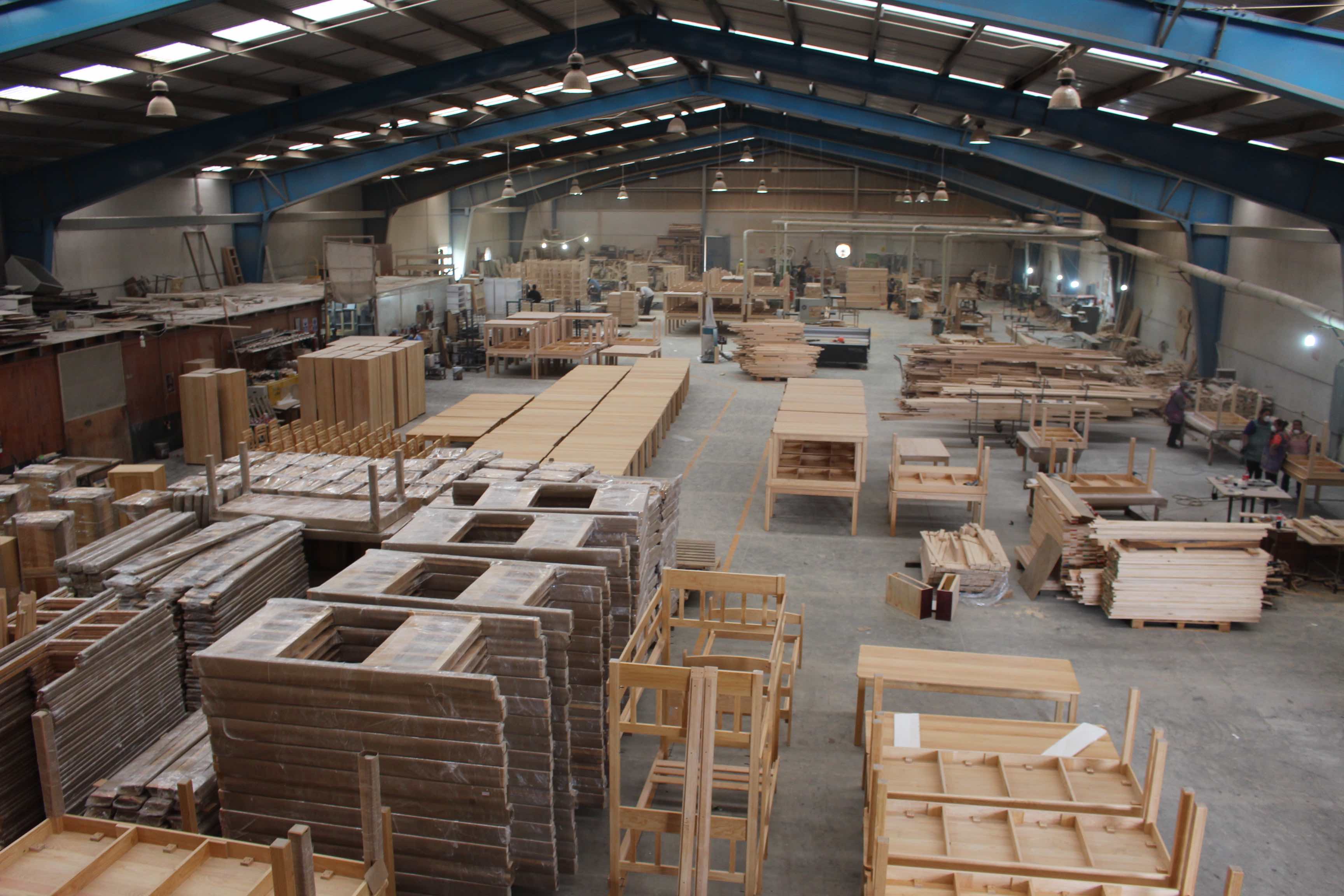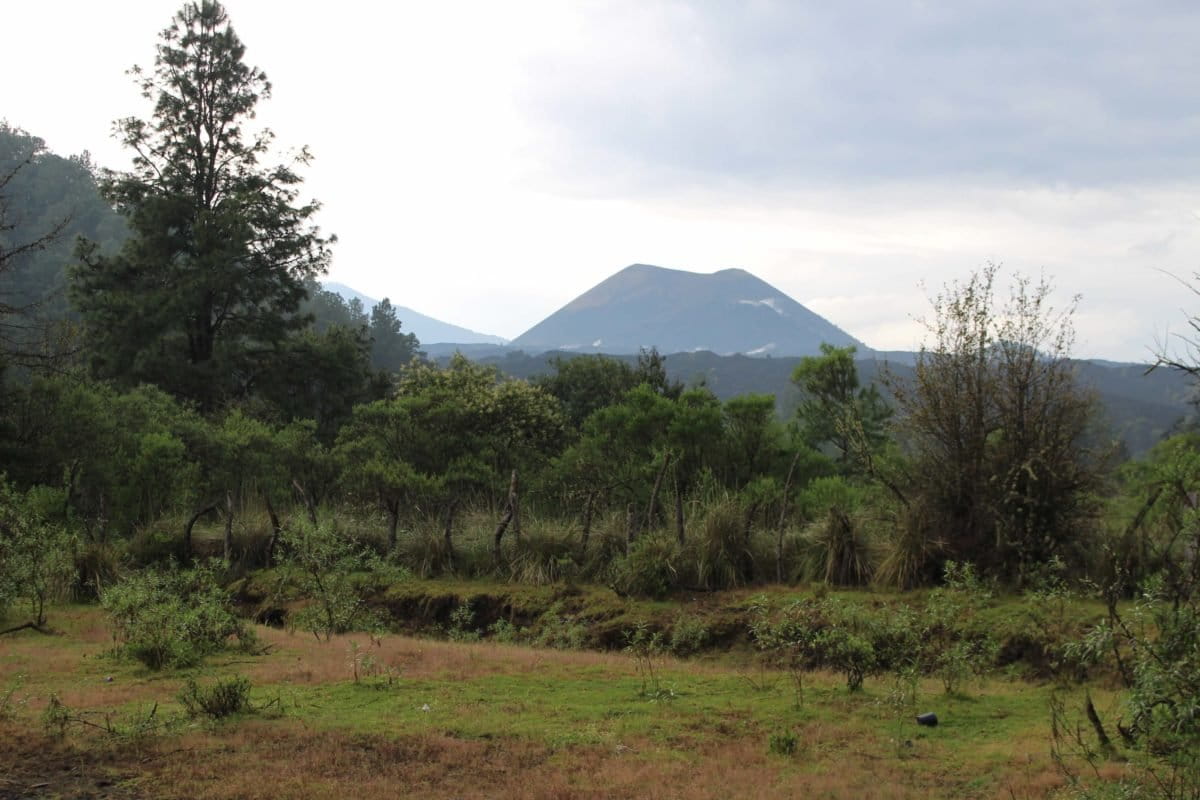- After the Parícutin volcano erupted in the 1940s, the Mexican village of Nuevo San Juan Parangaricutiro was rebuilt, shaping a forest management model that today has 12 community enterprises.
- In a region where forests have been cleared for avocado plantations, the community maintains a temperate forest covering around 12,000 hectares (30,000 acres).
- Bucking the nationwide increase in Mexico in deforestation, the community has actually added area to its managed forests.
It was in Michoacán state in central-western Mexico where the so-called war against drugs began in December 2006. The state fell apart, and in the meantime, the forests were simultaneously being destroyed through the illegal expansion of avocado cultivation, fueled by high avocado prices internationally. Nevertheless, in this same region, the community forests of the village of Nuevo San Juan Parangaricutiro, west of Mexico City, are a lesson on forest management, governance, conservation and wealth creation, said experts with knowledge of the community.
This community belonging to the Purépecha Indigenous group lives in the area around the Parícutin volcano, and it has struggled in the climate of ungovernability unleashed in the region in 2006. A few years later, the H1N1 flu pandemic hit, interrupting and paralyzing the regional economy. Despite these difficulties, however, Nuevo San Juan has successfully protected its heritage and assets and maintained its supply chain and commercial routes, sources said.

Today, the problem of violence remains unresolved. And an even more serious crisis has arrived: the COVID-19 pandemic. The Mexican government has almost totally withdrawn support and subsidies for the forestry sector, against a backdrop of a challenging international context. But the community members of Nuevo San Juan feel stronger and better prepared as a result of their prior experiences, said Héctor Andrés Anguiano Cuara, the community-designated spokesman. These past experiences might explain the success of their forestry experiment: They had no alternative after the Parícutin volcano erupted between 1943 and 1952. The “unusually long” eruption buried most of the colonial town and along with it their productive land.
Anguiano Cuara, who studied engineering in the city of Uruapan and business at IPADE, the Pan-American Institute for Executive Business Management, said their success can be summarized by a popular maxim: They made a virtue of necessity.
A forest out of the ashes
“This community has experienced many difficulties that have strengthened its organizational framework,” Anguiano Cuara said. “The first great complication was the eruption of Parícutin in 1943. They had to move and construct a new town center. The people were left with no work, homeless and with no economic opportunities for their families. The productive land was under ash or lava, and they did not value the forest. This led to emigration to other [Mexican] states, but above all to the United States.”
As researchers Alejandro Torres, Gerardo Bocco and Alejandro Velázquez documented in their study “Las enseñanzas de San Juan” (Lessons from San Juan), in 1949, the traditional authorities and their lawyers requested recognition and title for their communal lands from the Mexican government, a procedure that concluded in 1991.
While achieving the security of land ownership is essential, the intervening three decades permitted the community to establish a new town and slowly devise its transformation.

In this area of Michoacán state, many Indigenous Purépechas were working in the timber industry in the mountains, which were licensed to private companies. They decided that they needed further technical training in order to take control. The opportunity arose in 1977, when about 20 community members created the Luis Echeverría Union of Ejidos and Indigenous Forest Communities of Tarascan Plateau. In 1979, the union obtained its first forest use permit.
The experience was not all positive. Nuevo San Juan eventually separated from the union and focused on working alone on a project for its communal forests, which had been degraded by private companies.
The community members of Nuevo San Juan first extracted the dead wood and firewood, Anguiano Cuara said, but then they began to make use of the forest.
Anguiano Cuara said that at the start of the forest project, the community enjoyed the support of a paper company known today as BioPappel Grupo Scribe de Morelia, the community’s first client. With Scribe’s support, on July 16, 1983, the community established a modest sawmill, which created around 15 jobs for the community.
“We had no resources from the government,” Anguiano Cuara said. “[Scribe] financed us, which we paid back with firewood. That’s how we got started — with a manual sawmill.”
Anguiano Cuara eventually became Scribe’s sales and marketing coordinator, a position that he holds today.

Shaping a forest enterprise
The initial results of the forest project were presented at a community assembly in 1984. Anguiano Cuara said some people did not have confidence in the work, which could have caused the project to collapse. But the majority of the Purépechas decided this would not happen.
“It was a complex situation politically and socially, with internal politics and leadership issues,” Anguiano Cuara said. “People were discouraged. The union had left distrust. Many did not believe in the project, but there were others who continued supporting it until it yielded results.”
He said the older members remember that the forest enterprise then needed more investment. However, to win the trust of the people, it was decided that the profits would be shared among the community members instead of being put toward needed vehicles and machinery.
But for most of the community members, the money did not last long. They realized that sharing profits was unhelpful and that the enterprise needed reinvestment. They also concluded that it was better to guarantee permanent jobs for the community. The assembly reached an agreement on these issues, carrying them through the next decade of work.
The community members not only stopped receiving profits, but also had to contribute unpaid work, known as faenas, or elsewhere as tequio. They began to build the first facilities, storerooms and offices, while they reinvested profits in tools, vehicles, and personnel training.
“They were campesinos who knew how to work the land [not the forest], so they had to bring in many outsiders to move forward with the first projects,” Anguiano Cuara said. “But they quickly gained practice and took ownership of the processes.”

Expanding the forest
Committing to their children’s education was the other decision that cleared the way forward. The first students to graduate as forest technicians and engineers had to walk 10 to 12 kilometers (6.2 to 7.5 miles) daily to take classes in Uruapan, since there was no transportation, and the roads were bad.
The enterprise’s other decision was to purchase a pulp mill and then build their first wood-drying kilns using adobe. In 1985, they changed their forest management method from the “mobile method” to the forestry development method, which yielded a higher volume of timber.
At the end of the 1980s, technical management of the forest began. The efforts of the community members led them to try to recover lands covered by volcanic debris. In 1980, there were approximately 10,000 hectares (24,700 acres) of forest. Today, the forest has grown by at least 10%, evidence that the community has bucked the national trend of increasing deforestation.
This was the first step toward “what we know as community agriculture gardens,” Anguiano Cuara said. Their commitment to the forest had already been decided. They planted a peach orchard, but not at the expense of the forest. Instead, the planting was on land that was reclaimed from the volcanic wasteland. Today, the peaches have mainly been replaced by more lucrative avocadoes.

Nuevo San Juan Parangaricutiro’s communal lands cover 18,138 ha (44,820 acres). According to data in a case study published by the United Nations Development Programme, as part of the Equator Initiative prize that the community won in 2004, more than 10,880 ha (26,885 acres) of these lands are designated for forestry, 1,200 ha (2,965 acres) for forest planting and nurseries, 1,913 ha (4,727 acres) for agricultural use, 2,122 ha (5,243 acres) for fruit orchards, and 35 ha (86 acres) for livestock pasture. An additional 1,685 ha (4,163 acres) are categorized as “rocky terrain” and 152 ha (375 acres) as shrubs and bushes.
The Nuevo San Juan Parangaricutiro community’s temperate forest is typical of the central Mexican altiplano. Conifer species predominate, although there is also significant oak and alder diversity as well as other species. The plant species density is about 100 per ha (about 40 per ac), from bushes to trees. The challenge of forest use is to not degrade this ecosystem that provides essential environmental services, such as carbon capture and habitat for animals including white-tailed deer, wild cats, coyotes, foxes, reptiles, amphibians and birds.
The importance of Nuevo San Juan’s forests, which are highly conserved, has increased as the expansion of avocado cultivation has altered the region, often with illegal changes in land use across the Purépecha Plateau.
Jaime Navia Antezana, the director of the NGO GIRA, the Interdisciplinary Group for Appropriate Rural Technology, said that, of the almost 200,000 ha (494,000 acres) of avocado cultivation established in the state of Michoacán in the last 30 to 35 years, around half were previously temperate forest. The crop’s prevalence, Navia said, is “increasing daily, not only on the plateau, but in what is known as the avocado belt, which crosses all of Michoacán from east to west.”

Growth, thanks to the forest
In 1989, Nuevo San Juan invested in more machinery, which allowed them to process more cellulose fiber and, so far, generate a daily cash flow.
“Our business partners are more than clients; they have supported us in strategic investments,” Anguiano Cuara said.
Starting from scratch forced them to do things differently. For example, at the beginning of the 1990s, Nuevo San Juan purchased four buses to transport workers and residents. The community enterprise has four routes that cover the entire community. Over the years, they have also created a water bottling company, a community store and a cable television channel.
Nuevo San Juan has also increased its human capital exponentially. In 1990, according to INEGI, the National Institute of Statistics and Geography, barely 4.9% of the population had more than a primary school education. In 2020, these figures, which are updated every five years, indicated that five out of six families in the community had at least one child who was either in university or had completed a university education. This has generated a steady outflow of community residents for work or academics, but the diversification in education and trades is a competitive advantage. The community now comprises teachers, lawyers, accountants and various types of engineers and business specialists.
Furthermore, the community serves as a learning site for the Uruapan Forest Ranger School and has connections with the agrobiology department also located in Uruapan.

The push for community forestry
It was in the 1990s that the Mexican government discovered the forest and the opportunities offered by forest management.
“There was talk of the model that San Juan had begun, talk about community forestry,” Anguiano Cuara said. “There was clearer interest on the part of the government, and in the latter half of the decade, they began to support it directly.” This support has been fundamental, he added. He said he believes that, 37 years after their first sawmill, Nuevo San Juan now serves as a model. But if they had had to do it alone, without the support of the government, it would have taken twice as long to reach this level.
The community has continued to diversify its productive activities. It established an environmental management unit for white-tailed deer reproduction and an ecotourism center named Patzingo near the volcano.
The World Bank has also provided resources for training and environmental education. In 1997, Nuevo San Juan obtained its first certification from the Forest Stewardship Council (FSC). This certification has been essential to maintaining its high labor standards and guaranteeing the conservation of the forest. As part of meeting FSC standards, all processes are reviewed and action items identified every five years, including the forest and industrial operations, as well as a survey of social inclusion issues.
“This [FSC] certification is satisfying for us,” Anguiano Cuara said. “It is the most rigorous organization globally.” Although the community only exports around 5% of the timber it produces, the FSC certification logo is already opening up markets in Mexico.

Nuevo San Juan produces around 65,000 cubic meters (2.3 million cubic feet) of timber each year and has created various forestry enterprises for products ranging from resins to furniture. It has a sizeable presence in markets in Mexico City, Guadalajara, Michoacán, Guanajuato, Querétaro, Veracruz, Puebla and Chihuahua.
The operations efficiently use nearly all parts of the felled timber: The primary wood is used to make boards, planks and studs for construction, as well as finished products like furniture, floorboards, moldings and even cabins. The secondary, smaller-diameter wood found near the top of the tree is used to make pallets.
Finally, branches and thinner trunks are debarked and ground to make cellulose fibers for paper. After cutting down and processing a tree, only about 8-10% of it remains in the forest in the form of twigs and leaves, which by law must be chipped to prevent the accumulation of combustible materials and help conserve the soil.

How has Nuevo San Juan dealt with the problem of cheap wood imports, mainly from countries like Chile and Brazil? At the start of the decade, there was resentment, but Anguiano Cuara said that after two years, the inferior quality of the imported wood caused clients to come back.
The pine species of the Purépecha forests, dominated by Pinus michoacana and P. pseudostrobus, are in high demand on the national market. The wood is flexible and solid. Furthermore, due to its geographic location, Nuevo San Juan does not have to raise its prices to account for long-distance transportation.

Facing new challenges
Throughout four decades of forestry, Nuevo San Juan has created 12 enterprises, which in turn provide 900 permanent and 300 temporary jobs. There are enterprises for forest use; resin distillation; comprehensive development, which include forest activities that range from collecting seeds to developing technical studies; community gardens, producing avocadoes, peaches and, in greenhouses, tomatoes and blueberries; the farming program for strengthening the gardens through services, including the management and conservation of springs and the water cycle; fertilizer distribution; a community store; cable television; the Patzingo ecotourism center; water bottling; local transportation; and an office to bring in international resources, which is now testing out carbon credits.
Nuevo San Juan is preparing for difficult times. Substantial reductions in support from the federal government have led them to plan for a baseline, beginning this year, of receiving no government support. They will rely on their strengths to face this: human capital, diversification, and the powerful commitment of the 1,254 community members.
Why does Nuevo San Juan possess these strengths while other forest communities remain so vulnerable? José Iván Zúñiga, forests manager at the World Resources Institute (WRI) Mexico, said he believes that older community projects were fortified by stronger government support through PROCYMAF, the Conservation and Sustainable Forest Management Program, while after 2001, CONAFOR, the National Forestry Commission, was less incisive.

Another factor is that the Indigenous communities have centuries of deep-rooted tradition, while many ejidos, or communal lands for agriculture in Mexico, were formed more recently and are more socially diverse. The scale of forest use also matters.
“Even though in some cases the area of land is not very large, forest management has provided sufficient income to make significant social investments and lend itself legitimacy, through investment in schools, a hospital, grocery store, or transportation,” WRI’s Zúñiga said. “This creates a common good that strengthens the community forest enterprise and the will to continue developing it because there is a consensus. In contrast, when there is little income, insufficient for social investment or distribution, there is less consensus.
“In Nuevo San Juan, there is of course the avocado boom, but since there is strong social organization, land-use management, and institutionality, everything is controlled,” Zúñiga said. “The avocado plantations are not located in the forest, and they are supplied by the community itself. They have done a good job of overcoming challenges of insecurity, the expansion of avocado cultivation and other [issues].”
As it turns out, there is no miracle. Nuevo San Juan is the fruit of organization, well-channeled efforts and clear goals, its members say. Now it faces new challenges, perhaps the most difficult since the volcano erupted and changed the community’s lives forever.
Banner image of the Nuevo San Juan Parangaricutiro Indigenous community, which maintains about 12,000 hectares (30,000 acres) of temperate forest in Michoacán, by María Eugenia Olvera/Polea A.C.
This story was first reported by Mongabay’s Latam team and published here on our Latam site on July 23, 2020.
